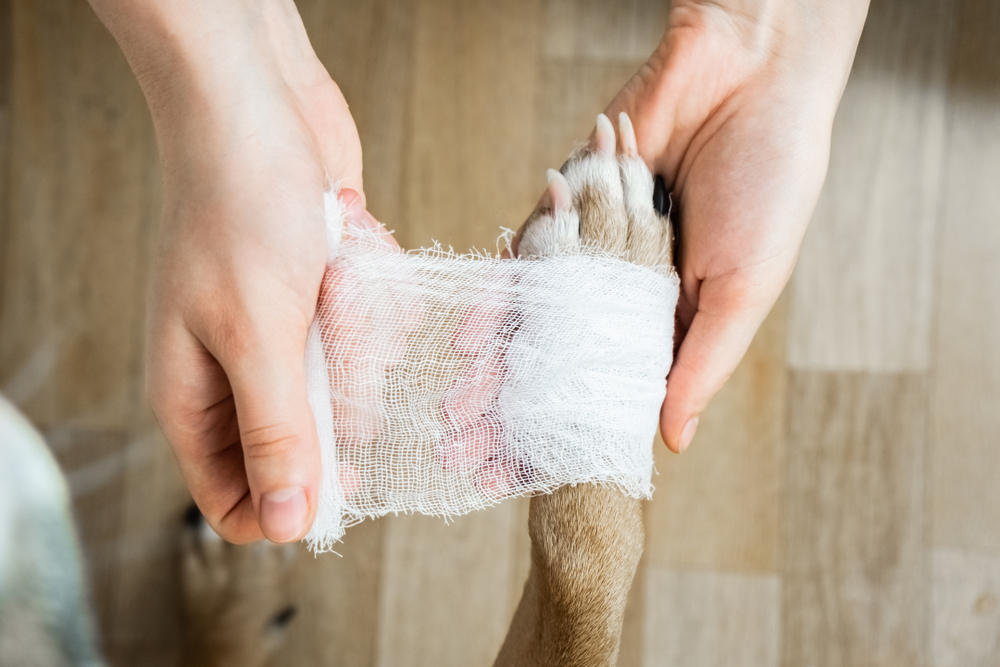How to Treat Minor Pet Wounds at Home

You can treat minor pets wounds at home since not every scrape or injury requires pet emergency care. Our pets will occasionally experience a cut, abrasion, or other minor wound. Dogs especially have more of these instances, since they are more rambunctious than their feline counterparts. The team at Oakland Veterinary Referral Services is here to help explain the right way to treat minor pet wounds at home with pet first aid.
Get a Pet First Aid Kit
Are you prepared for a pet injury? If you don’t have a pet first aid kit, purchase one or make your own by following the AVMA list of pet first aid supplies. In order to treat a wound, you will need to have the following:
- Sterile bandages
- Cleansing solution suitable for pets
- Antibacterial ointment
- Bandage scissors
- Elastic wrapping
- Tweezers
- Spray bottle
- Clean towels or rags
Treat Minor Pet Wounds at Home
Before you begin, make sure you have someone to help you restrain your pet while you treat the wound. If no one is available, you can also use a muzzle. Even if your pet has never been aggressive, pain can cause a pet to react differently. Avoid scratches or bites by having a plan to keep your pet stable and calm while you treat the wound.
- Stop the bleeding. If the wound is bleeding, put a clean towel or cloth over the wound and apply light pressure. If the wound is bleeding profusely, it’s best to go to the veterinary emergency hospital since this is a more serious wound than a simple cut.
- Clean the wound. Puncture wounds, such as a bite wound, can appear minor, but they are not. Bite wounds contain bacteria that can cause infection. Even if it is small, clean and bandage the wound. To do this, use a water bottle with clean water in it and spray on the wound to clean out any debris, dirt, etc.
- Remove any foreign objects with tweezers. If there are things like glass, twigs, thorns, etc. in the wound, remove them with tweezers. Use a magnifying glass to remove all of the debris.
- Disinfect the wound. Using a cleanser such as diluted betadine or chlorhexidine, which are often included in a packaged first aid kit, gently clean the injured area. Do not use rubbing alcohol or hydrogen peroxide as these can damage the tissue and delay healing.
- Cover up the wound with a bandage. Apply a small amount of antibacterial ointment and cover the wound with a piece of sterile gauze or other bandage. Use the elastic tape to hold the bandage in place.
- Consider an E-collar. Pets can’t understand not to bite or lick at a bandage. Since their mouths can spread bacteria into the wound (and have you repeatedly disinfecting and reapplying a bandage), consider using an E-collar (aka cone of shame) to protect the wound site.
When finished, reward your pet for being a brave boy or girl with a small treat. Take care to remove the old bandage after 24 hours and replace with a new one. Monitor how your pet’s wound is healing. If you notice there is additional bleeding, changes to the color of the wound, swelling, or discharge, contact us. This may indicate an infection or that the cut or puncture isn’t healing properly.
If you would like more information on how to treat minor pet wounds at home or if you are unsure whether or not it’s a pet emergency, please contact us.


